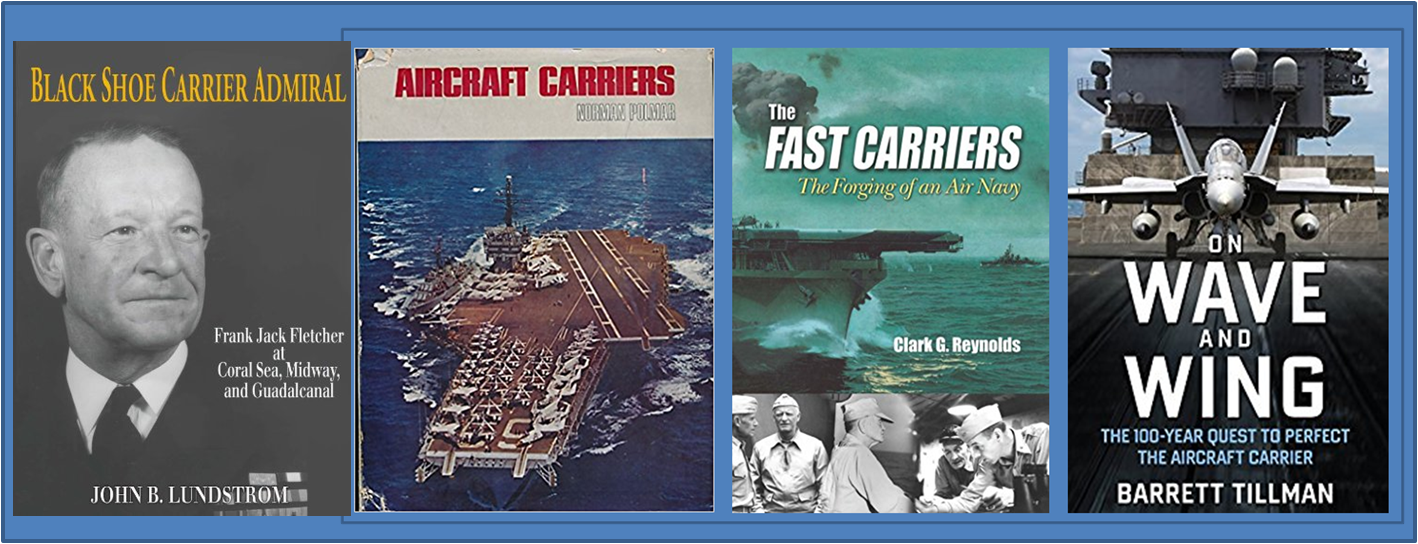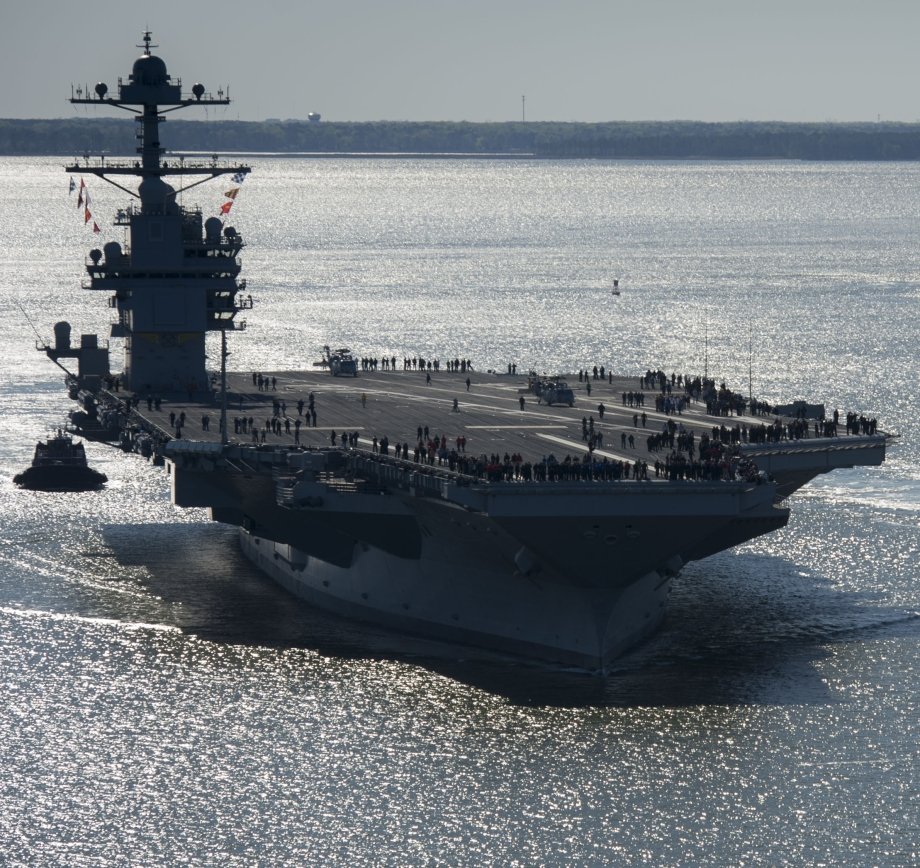Blown Slick Series #13 Part 8
Decisive victory? Depends on how you look
… a fundamental transformation in naval power had just taken place. Carriers usurped the prime strategic role of battleships in that their principal opponents were their enemy counterparts, and they should only to be committed to battle in the proper circumstances ..
Black Shoe Carrier Admiral: Frank Jack Fletcher at Coral Sea, Midway & Guadalcanal , Lundstrom, John B..
Today, seventy six years after the battle, Midway still has its paradoxes and conundrums; why did Yamamoto not concentrate his forces (which would have been much more than U.S. Navy) at the point of contact? why did Admiral Fletcher send out his scout planes on the first morning and then launch later than Enterprise and Yorktown? Why was Captain Browning’s launch from Enterprise so flawed? Why is their still debate on the course Hornet’s airwing commander Stanhope Ring took to the Japanese battlegroup, (the “flight to nowhere”) combined with what direction VT-8 took to be the only Hornet squadron in the battle? Did Admiral Fletcher and Captain Buckmaster abandon USS Yorkdown too soon? Should Admiral Fletcher/Spruance have pursued the Japanese the night of the 4th?
Many of the questions still persist and veterans of the battle have gone to their graves with issues still in dispute. Parshall and Tully’s research from the Japanese side have alleviated or highlighted key aspects but differences still remain. The legacy of one paradox in particular is of interest even today, and is the point raised in this Epilogue to the Midway Trilogy, before beginning discussion of the Guadalcanal campaign.
In early post-war analysis and writing, first, not only has Midway been characterized as a miracle or incredible victory, it has also been considered by many as the decisive battle of the Pacific War. But secondly and concurrently, historians have also pointed out and agreed that while Japan ran victorious for six months, no one – including the Japanese themselves – believed that in a protracted war, with all its industrial capability to call on, the end result could be anything other than a U.S. victory. Indeed, the war was initiated by Japan thinking it inevitable and thus desiring to strike first, do as much damage as possible and establish a defensible island stronghold behind which to retreat with certain key spoils of a limited war.
Given these two aspects can Midway be considered a decisive victory? The Battle of Midway certainly changed the course of the Pacific War in that the loss of the four Japanese carriers turned the tide in the sense that the U.S. could now consider shifting from a defensive and raiding posture to true offensive action, but let’s consider the context from Shattered Sword:
… the final conundrum surrounding the true meaning of winning or losing at Midway.
Since the day the battle was fought, the American victory there has been labeled as being “decisive.”… analysis has shown that, win or lose at Midway, it was extremely unlikely that the Americans were going to lose the war in the Pacific, and it was equally unlikely that the Japanese were going to win. How, then, can such a battle be considered decisive?
As H. P. Willmott (The Barrier and the Javelin) pointed out, there is a basic contradiction in simultaneously thinking that the Americans were bound to win the war and that the Battle of Midway was decisive. To be decisive, Midway had to be a defeat from which the Japanese could not recover, of the sort, for example, that the Japanese inflicted on the Russians at Tsushima. But that was clearly not the case, Willmott notes, given the vigorous Japanese naval actions later in 1942 around the Solomons. Midway might also be termed “decisive” if it had completely altered the course of the war, but that also seems untrue. If the defeat of Japan “was assured because of the disparity of national resources, Midway was at best only a milestone on the road that led to defeat; it was not a signpost that marked a parting of the way, one track leading to American victory and the other in precisely the opposite direction.”
This leads back to the logical contradiction in asserting simultaneously that Midway was a decisive battle and that American victory was inevitable, because “the notion of an inevitable victory is irreconcilable with that of a decisive battle.” If Midway merely hastened by some months a foregone conclusion to the conflict that still lay some years in the future, as seems to be the case, then it cannot legitimately be termed decisive.
Now, for sake of argument given the focus of this series on possible lessons from the earliest application of carrier warfare for future air warfare, let’s consider another context or definition of decisive battles from 100 Decisive Battles From Ancient Times to Present; The World’s Major Battles and How They Shaped History by historian Dr. Paul K. Davis:
- The outcome of the battle brought about a major political or social change – the Norman victory at the Battle of Hastings completely altered the future of the British Isles
- Had the outcome of the battle been reversed. major political or social changes would have ensued – had Washington not crossed the Delaware River or lost at Trenton, the defeat almost certainly would have spelled the end of the American Revolution
- The battle marks the introduction of a major change in warfare (emphasis added)
On this last – major change in warfare – “decisive” then becomes a term worthy of some consideration in regard to carrier aviation and the validity of it’s use as regards the Battle of Midway and for today’s application of airpower.
As noted by Thomas Hone, editor of The Battle of Midway; The Naval Institute Guide to the U.S. Navy’s Greatest Victory, … the real nature of the Battle of Midway was poorly understood for some months after the Japanese defeat, indeed initial credit was given to land-based airpower, but this of course was wrong.
The really effective attacks were made by the carrier dive bombers.
The proof of this came on 19- 20 June 1944, in the Battle of the Philippine Sea. You might think of this as “The Battle of Midway, Round Two.” Fought near the island of Saipan in the Marianas group, the Battle of the Philippine Sea set the rebuilt Japanese carrier force, commanded by Vice Admiral Jisaburo Ozawa, against Admiral Spruance’s Fifth Fleet. Both navies had studied the Battle of Midway, and both had learned from it, but it was only the U.S. Navy that had created a carrier force that could advance deep into enemy territory and defeat both land-based and carrier-based air forces. In two days of multiple air battles, the Japanese lost over 90 percent of the aircraft that they had thrown against Spruance’s carriers and surface ships. Philippine Sea was the “last gasp” of the Japanese fleet’s carrier aviators. At the end of October 1944, after its defeat at the Battle of Leyte Gulf, the Japanese navy began using kamikaze (suicide) attacks in an effort to compensate for the defeat of its carrier forces.
Out of World War II in the Pacific, the carrier emerged as THE U.S. capital ship for domination of maritime military operations for 76 years and running. By way of example:
- On 27 June 1950, in response to North Korea’s invasion of South Korea, President Truman ordered naval and air forces to both defend South Korea and deter Communist/Nationalist conflict in Formosa. Valley Forge was the only carrier in the Seventh Fleet and along with the British carrier Triumph formed as Allied Task Force 77 and provided the majority of allied airstrikes on the Korean Peninsula for nearly a month, as the U.S. Air Force worked to establish bases in Korea for tactical aircraft.
- With the escalation of the Vietnam War, developments in aerial tactics allowed smaller, lighter aircraft to deliver large payloads against specific targets. By the end of the war, the U.S. Navy had the ability to fulfill any combat mission that the USAF could, from pinpoint precision strikes to nuclear attack, with the Air Force of course retaining its superiority in B-52 bomber style carpet-bombing.
- During Operation Iraqi Freedom, five carriers were employed in the March 2003 campaign, while two other carriers were in work-ups and two other carriers were on their way to the theater or held in reserve in the Western Pacific.
- In 2014 the Carrier Strike Group (CSG) demonstrated its versatility when the Bush CSG relocated from the Arabian Sea where it had been supporting operations in Afghanistan to 750 NM away in the Arabian Gulf in less than 30 hours and immediately began conducting strikes against the Islamic State of Iraq and Syria (ISIS). Due to difficulties obtaining basing access and coalition support, the Bush CSG was the only coalition strike force to project air power against ISIS for 54 days.
Since the Battle of Midway, opponents of the U.S. have had to think and consider how to counter U.S. carrier air power. The battle rightly then can be judged maybe not as the decisive battle of the Pacific war but certainly as deserving of the mantle “decisive” in ushering in such a major long term change in war-at sea.
And yet, despite its mobility, effectiveness and flexibility for crises as a combatant and deterrent, a series of arguments against the Navy’s air arm as a whole and carrier aviation in particular, have persisted throughout the aircraft carrier’s existence. Current anti-access/area denial capability such as China’s DF-21 anti-ship missile highlight current arguments. That A2/AD issue is the basis for most critique on building strategy around CV’s considering the significant cost, high end technology, and people on the newest Ford class CV as seen below, and indeed, what would happen if we lost such a carrier and its 4000 sailors?
And thus with all the conundrums and paradoxes from 4 June, 1942, the lasting paradox brought about by Midway:
the emergence and continuation of the aircraft carrier as a flexible dominant maritime threat and resource
as compared to
its potential vulnerability and significance of loss.
Despite its vulnerability, one just does not throw away such capability out of fear of loss.
USS Ford CVN 78
Yet the few existing big carriers also had to lead the way to provide air support for an amphibious offensive . That albeit necessary dual role boded great peril , as Japan discovered at Midway , and greatly complicated how the carriers could and should be used in combat.
And so, the next 1942 carrier story, similar but different in key aspects from Midway and Coral Sea – the Battle for Guadalcanal – Part 9 of 1942- the Year of the Aircraft Carrier.







